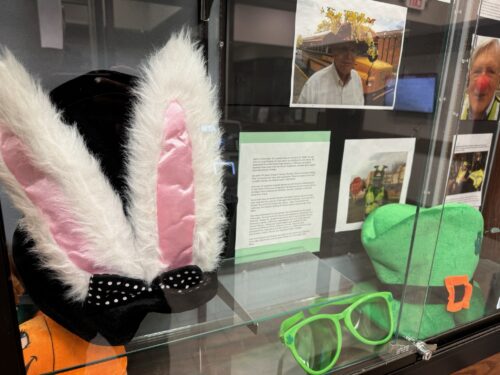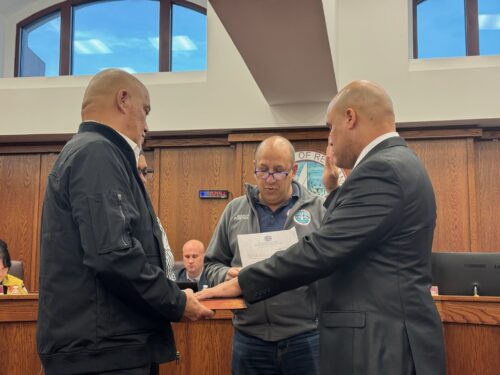
By JOHN T. WARD

No kittens are believed to have been born in the past year among the dozens of felines that inhabit the ocean beach and nearby edge of the Shrewsbury River, says Mayor Dina Long.
Long, who championed the program as a council member (and is the owner of ‘Leonard,’ a 14-year-old former stray from another town) says the program “had a great first year.
“Almost 100 cats were trapped, immunized, neutered and microchipped, at no cost to taxpayers,” she said, noting that costs were picked up by a grant from the Monmouth County Society for the Prevention of Cruelty to Animals. “And for the first time, no new kittens were born on the beach last spring, which is huge,” she said.
The grant followed enactment of an ordinance that enables certified caregivers to feed and tend to the cats in the wild. The volunteers stepped in to trap the cats, and hosted them in cages in their homes during a transition period following sterilization and medical treatment and before the animals were released back into the wild, says borough resident and caregiver Frieda Finegan.
“The cats are all fed and healthy,” Finegan tells redbankgreen. “And there are no kittens.”
Long credits the volunteers for hunting down and trapping cats in advance of the 2011 winter mating season for the turnaround.
“We were out there in the rain and cold. We sat there for five and six hours” waiting to snare some of the feral cats, which won’t approach humans, said Finegan, who is 70 years old. “We had blue fingers.”
Some cats were trapped in an abandoned building, she said.
The borough was forced to act by the U.S Fish & Wildlife Service, which has responsibility for safeguarding piping plovers that inhabit the beach and are prey for cats. Previously, the town would round up as many cats as it could and have them euthanized, but the killings did little to halt population growth.
After requiring the borough to “jump through a lot of hoops,” the agency “thankfully, worked with us, and allowed us to manage our own beach” by signing off on the trap, neuter and release program, Long said.
Caregivers are responsible for tracking the microchipped cats and looking out for those without clipped ears, the signifier that a cat has been treated.
Finegan and four other volunteers monitor the cat colonies behind the beach recycling center and along the river twice a day, giving them “good quality food,” some of which she cooks herself. She estimates there are 40 cats in the two locations.
The challenge going forward, said Long, is keeping up the ranks of volunteers, who visit the cat colonies one or twice a day with food, fresh water and attentiveness to their health and safety. They also trap new cats animals that have wandered off or been abandoned by their owners and take them to the SPCA for sterilization.
Long says she’s not ready to declare the program a success yet, though. It’s a five-year operation, and “we’ll see after five years how many cats we have then,” she said.
The goal, she adds is not to eliminate the stray cat population ”I don’t think that would be possible,” she said but to have all cats accounted for and cared for.
Finegan, who once took a waitressing job just to have access to scrap meat and fish for strays, says she’ll keep doing it as long as she can.
“They’re god’s little creatures,” she said. “They didn’t ask to be here.”





















